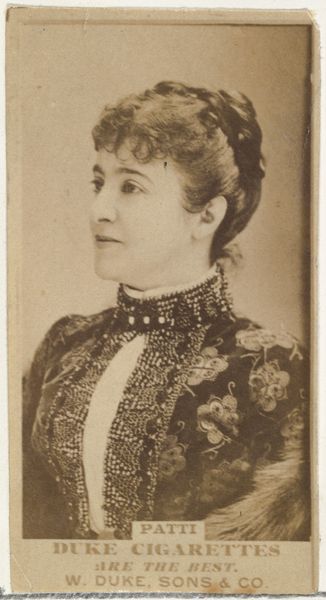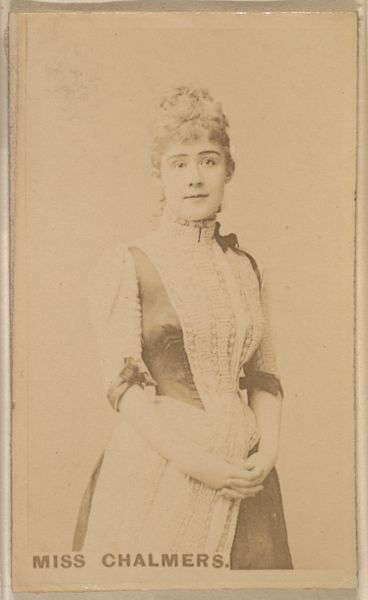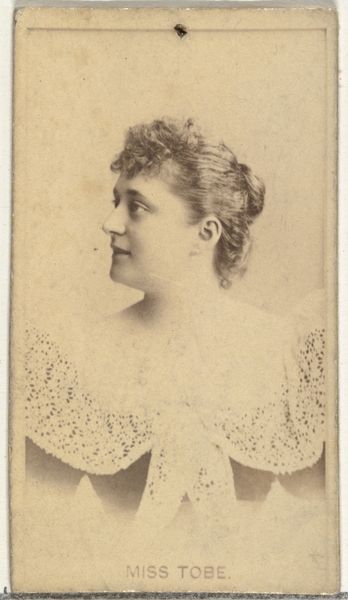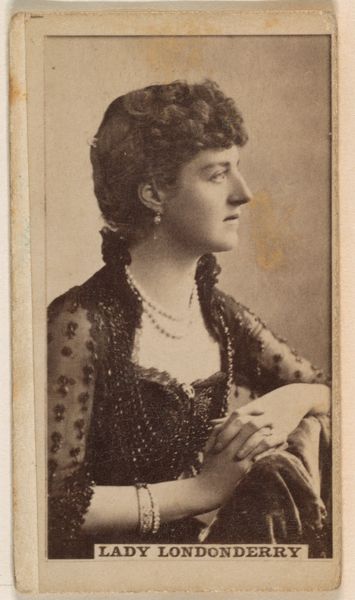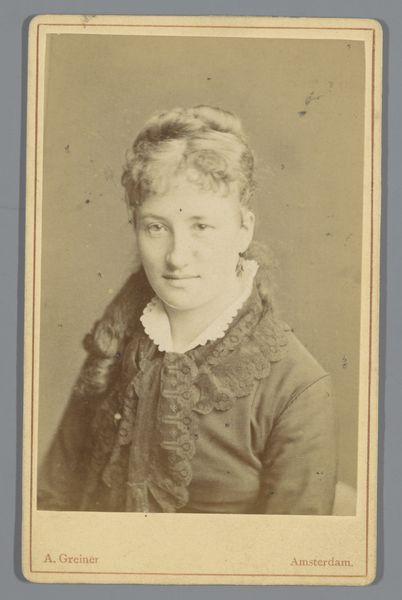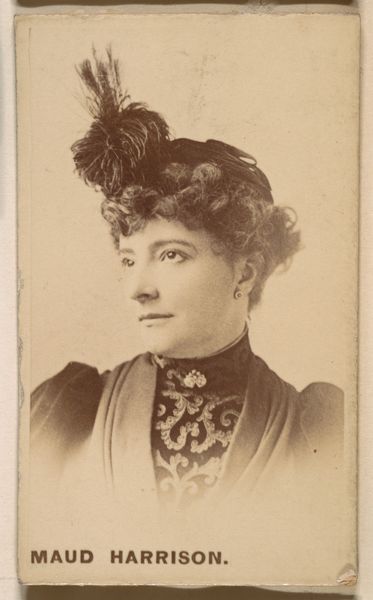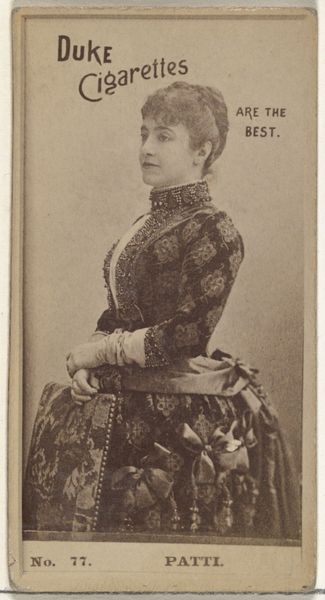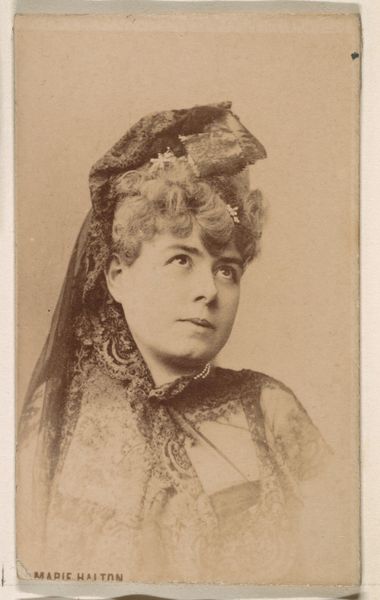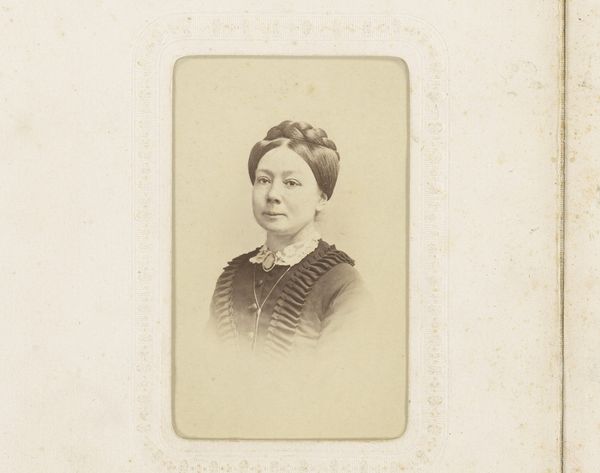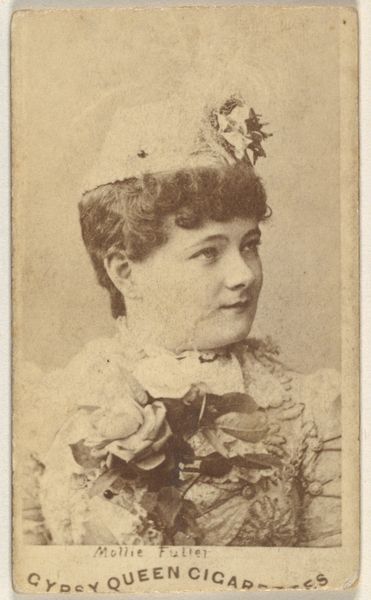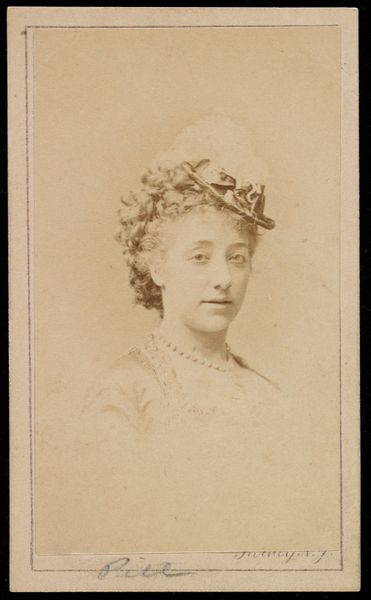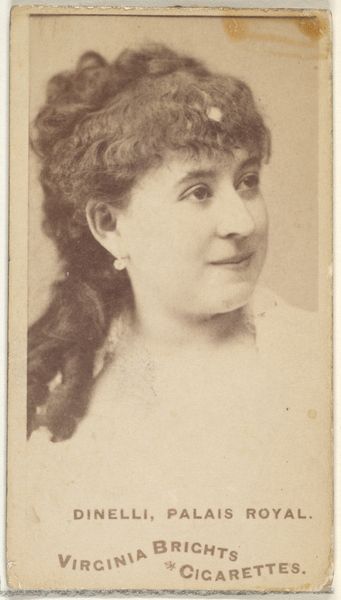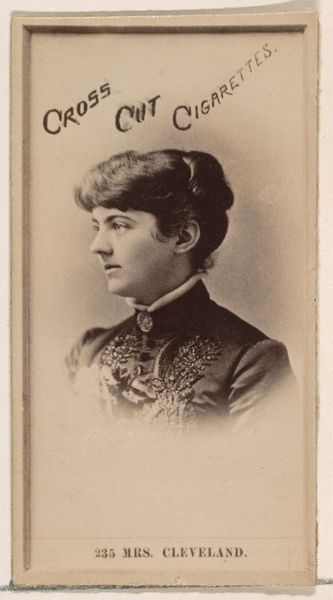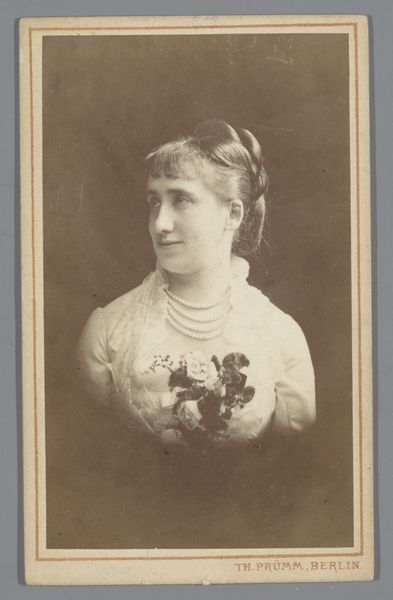
Adelina Patti, from the Actresses series (N246), Type 2, issued by Kinney Brothers to promote Sporting Extra Cigarettes 1888 - 1892
0:00
0:00
drawing, print, photography
#
portrait
#
drawing
#
pictorialism
# print
#
impressionism
#
photography
Dimensions: Sheet: 3 1/16 × 2 7/8 in. (7.7 × 7.3 cm)
Copyright: Public Domain
Editor: Here we have "Adelina Patti" from the Actresses series, created sometime between 1888 and 1892 by the Kinney Brothers Tobacco Company. It's a sepia-toned print. The soft focus gives it an almost dreamlike quality. I am intrigued about why a tobacco company would create these cards. What’s your take on this? Curator: It's fascinating, isn't it? Tobacco companies often used imagery tied to idealized femininity and celebrity culture to market their products. This particular piece, as part of a series, points to the blurring lines between art, advertising, and the public consumption of images. Editor: So it's less about artistic expression and more about sales? Curator: Not entirely. While sales were undoubtedly a key driver, we must consider the social and cultural context. The late 19th century saw a surge in popular culture and celebrity worship. Actresses were among the most recognizable figures, and their association with a product like cigarettes would lend an air of glamour and sophistication. Notice the soft focus, lending Patti a timeless quality. Who consumes these images? Editor: Likely men, primarily. Curator: Precisely. It reinforced ideals of beauty, success, and aspiration, appealing to a specific demographic and shaping their perception of both the product and the portrayed figures. How do you think this relates to how art and photography were perceived at the time? Editor: Hmmm... I guess it suggests that both art and photography were becoming increasingly intertwined with commerce and popular appeal, instead of remaining within the confines of galleries. Curator: Exactly. It reflects a broader shift in the public role of art. The mass production of these images democratized access to portraiture but simultaneously subjected it to the demands of consumer culture. The "Actresses" series acts as an important lens to understanding those socio-economic transformations in visual culture. Editor: That's so interesting. I had only thought of it as an old photograph, but it clearly reveals a lot about how images circulated and were used to shape society! Curator: It does. The study of art history can really reveal those powerful interconnections between commerce, fame and culture.
Comments
No comments
Be the first to comment and join the conversation on the ultimate creative platform.
